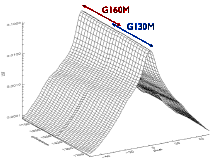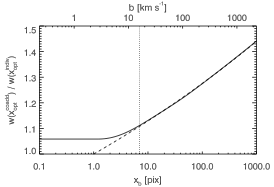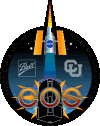 |
COADD_X1D.pro (latest version, v3.1.1: 6/13/14)
This routine combines a set of far-UV COS exposures into single set of
wavelength/flux/error vectors. A lot of work has gone into this code
and it does a lot of things above and beyond a simple coaddition. See
the extensive comments in the preamble and the code itself for much
more information.
Major changes since v2.x: proper utilization of data quality flags,
data binning.
Note that the code requires specific versions of several common
codes, including the version of LINTERP.PRO which is part of the
ASTROLIB library. The version distributed with GHRSLIB does not work.
If you get errors saying "Keyword 'missing=0' not allowed in LINTERP",
this is likely your problem. Check the order your IDL libraries are
loading.
Older versions:
COADD_X1D_v2.1.pro (as of 7/12/12)
COADD_X1D_v1.pro (as of 12/14/10)
|
 | COS_INSPECT.pro
This is a quick-and-dirty routine to display the wavelength/flux/error
vectors in a set of far-UV COS x1d files. This is a good way to see
what you've got, check for grossly-bad CalCOS reductions, and take a
first look at the data. |
 | COS_LSF.pro On-orbit
observations have revealed that the COS line spread function (LSF) is
not the ideal Gaussian profile. Instead of a 6.5 pixel FWHM, the
profile is more like 7.9 pixels FWHM and up to 40% of the light falls
in the wings. Mid-frequency wave-front errors in the HST primary
mirror are the culprit. The LSF is asymetric and dependent upon both
wavelength and grating. For much more on the subject, please
see the STScI ISR on the subject. However, the LSF has been
characterized and can be easily accounted for in analysis. STScI
gives the LSF
in tabular form, but, for speed's sake, I have converted it into a
binary save file COS_LSF.idl
which you will need to run my routine. COS_LSF.pro produces the
modeled LSF for a given wavelength and grating for both far- and
near-UV detectors. I have had good success convolving the LSF with
gaussians, voigt profiles, and so forth in absorption line
fitting. NOTE: this version is slightly obsolete. There have been newer characterizations of the COS LSF, but I haven't incorproated them into the webpage yet. Stay tuned. |
 | COS_SIGLEVEL.pro
Determines the significance level of a measured absorption feature of a given eequivalent width, wavelength, b-value, and signal-to-noise via equations 4, 7, and 9-11 of Keeney et al. (2012). Latest version: 6/13/14
|
 | COS_EWLIM.pro
Determines an equivalent width limit for a set of COS data given a significance level, wavelength, b-value, and S/N via equations 4, 5, 7, and 9-10 of Keeney et al. (2012). Latest version: 6/13/14
|






